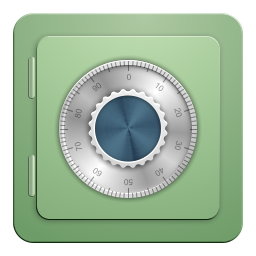
The Advanced Encryption Standard (AES), also known by its original name Rijndael, is a specification for the encryption of electronic data established by the U.S. National Institute of Standards and Technology (NIST) in 2001.
In cryptography, SHA-1 is a hash function which takes an input and produces a 160-bit (20-byte) hash value known as a message digest – typically rendered as 40 hexadecimal digits. It was designed by the United States National Security Agency, and is a U.S. Federal Information Processing Standard. The algorithm has been cryptographically broken but is still widely used.

In cryptography, a block cipher mode of operation is an algorithm that uses a block cipher to provide information security such as confidentiality or authenticity. A block cipher by itself is only suitable for the secure cryptographic transformation of one fixed-length group of bits called a block. A mode of operation describes how to repeatedly apply a cipher's single-block operation to securely transform amounts of data larger than a block.
Articles related to cryptography include:

A cryptographic hash function (CHF) is a hash algorithm that has special properties desirable for a cryptographic application:
FileVault is a disk encryption program in Mac OS X 10.3 Panther (2003) and later. It performs on-the-fly encryption with volumes on Mac computers.
The Encrypting File System (EFS) on Microsoft Windows is a feature introduced in version 3.0 of NTFS that provides filesystem-level encryption. The technology enables files to be transparently encrypted to protect confidential data from attackers with physical access to the computer.
There are a number of standards related to cryptography. Standard algorithms and protocols provide a focus for study; standards for popular applications attract a large amount of cryptanalysis.
CrossCrypt is an open-source on-the-fly encryption program for the Microsoft Windows XP/2000 operating systems. CrossCrypt allows a user to make virtual drives which encrypt any files stored on them, making the encryption process seamless to the user.
NSA Suite B Cryptography was a set of cryptographic algorithms promulgated by the National Security Agency as part of its Cryptographic Modernization Program. It was to serve as an interoperable cryptographic base for both unclassified information and most classified information.
SHA-2 is a set of cryptographic hash functions designed by the United States National Security Agency (NSA) and first published in 2001. They are built using the Merkle–Damgård construction, from a one-way compression function itself built using the Davies–Meyer structure from a specialized block cipher.
Disk encryption is a special case of data at rest protection when the storage medium is a sector-addressable device. This article presents cryptographic aspects of the problem. For an overview, see disk encryption. For discussion of different software packages and hardware devices devoted to this problem, see disk encryption software and disk encryption hardware.

BitLocker is a full volume encryption feature included with Microsoft Windows versions starting with Windows Vista. It is designed to protect data by providing encryption for entire volumes. By default, it uses the Advanced Encryption Standard (AES) algorithm in cipher block chaining (CBC) or "xor–encrypt–xor (XEX)-based Tweaked codebook mode with ciphertext Stealing" (XTS) mode with a 128-bit or 256-bit key. CBC is not used over the whole disk; it is applied to each individual sector.

FreeOTFE is a discontinued open source computer program for on-the-fly disk encryption (OTFE). On Microsoft Windows, and Windows Mobile, it can create a virtual drive within a file or partition, to which anything written is automatically encrypted before being stored on a computer's hard or USB drive. It is similar in function to other disk encryption programs including TrueCrypt and Microsoft's BitLocker.

BestCrypt, developed by Jetico, is a commercial disk encryption app available for Windows, Linux, macOS and Android.
This is a technical feature comparison of different disk encryption software.

KDE Wallet Manager (KWallet) is free and open-source password management software written in C++ for UNIX-style operating systems. KDE Wallet Manager runs on a Linux-based OS and Its main feature is storing encrypted passwords in KDE Wallets. The main feature of KDE wallet manager (KWallet) is to collect user's credentials such as passwords or IDs and encrypt them through Blowfish symmetric block cipher algorithm or GNU Privacy Guard encryption.
The following outline is provided as an overview of and topical guide to cryptography:
There are various implementations of the Advanced Encryption Standard, also known as Rijndael.

VeraCrypt is a free and open-source utility for on-the-fly encryption (OTFE). The software can create a virtual encrypted disk that works just like a regular disk but within a file. It can also encrypt a partition or the entire storage device with pre-boot authentication.









